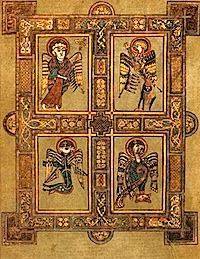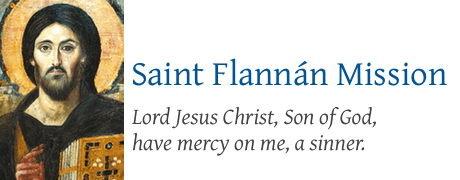What we celebrate at Divine Liturgy
We attempt to bring the heart of Divine Liturgy to our contemporary Christian families leading a hurried life.
The liturgy is based on ancient church rites (Holy Apostle James) and daily office. The liturgy is in 2 parts: (1) Liturgy of the Word (which includes Scriptural readings and a homily), and (2) Liturgy of the Faithful (which is the Eucharist).
We affirm the Mystery (sacrament) of the Sacred Eucharist (or Holy Communion), where bread and wine is transformed to the Body and Blood of our beloved Lord Jesus Christ. The Church does not describe this specifically, other than a Holy Mystery. We humbly believe we should do this as often as we can, as it is both solemn and rejuvenating.
Our communion is a closed one (as we believe in discipleship). We welcome our families to join us at the Divine Liturgy, to partake in receiving the body and blood of Christ in accordance with Tradition. We follow the Julian (Old) Calendar. Think of us simply as a “family cell group” in the contemporary Christian language, where our families worship together.
For those who require the Holy Mystery of the Eucharist in a visitation or hospital environment, or unction (anointing the sick) in our locality, we will be privileged to assist.
“And whilst they were eating, Jesus took bread; and blessing, broke, and gave to them, and said: Take ye. This is my body. And having taken the chalice, giving thanks, he gave it to them. And they all drank of it. And he said to them: This is my blood of the new testament, which shall be shed for many.” – St Mark 14:22-24 (DRC)
Reconciliation (Confession)
If you need the sacrament of reconciliation (confession), you can simply write them down on paper and talk to our priest 15 minutes before the liturgy.
Once in prerevolutionary Russia, a certain well known holy elder was asked to characterize a true Orthodox Christian. “A true Orthodox Christian,” answered the elder, “is one who is repenting.” (excerpted from Assistance in Holy Confession by Priest Gregory Naumenko. Orthodox Life Vol. 63 No. 2 March-April 2012)
Observing Church Liturgy and Worship
Here are some brief points:
- We stand throughout the entire Divine Liturgy (except during the homily);
- Formal and deeply reverent (it is a service for God, NOT entertainment);
- We make the Sign of the Cross at mentions of the Trinity;
- We venerate (NOT pray) to Blessed Mary, saints, and angels;
- Non-Orthodox worshippers can receive blessed bread;
- No personal stories but worship God only (leave that to other occasions);
- We light candles as we enter the Church, and venerate the Icons;
Other traditional rubrics may be observed, including wearing the veil for ladies, kissing the hand of the priest during the Eucharist, etc.
Homilies
 You will find some of our homilies (sermons) on this site. Click on “Homilies” in the menu above. The word “homily” is derived from the Greek Word “homileo” – conversation.
You will find some of our homilies (sermons) on this site. Click on “Homilies” in the menu above. The word “homily” is derived from the Greek Word “homileo” – conversation.
Our homilies content is mobile-friendly, which means if you browse our homilies using a smartphone (e.g. iPhone, Android or Blackberry), you will see a customized version for phones.
If you examine them, you will notice that our main focus is Theosis, that of growing ever closer to God, rather than address secular issues. This is what the Church focuses on. We believe in the importance of our daily walk with God, and the importance of the hereafter.
Do join us to contemplate on the issues and thoughts at hand, and reflect on the Holy Scriptural readings and the reflections in the homilies.
Small Oratory
Our small oratory is a PRIVATE space for family and friends to contemplate and read on various Eastern Orthodox Christian texts.
Divine Liturgy (historical prior to 2020)
Update (20231231) – Since the pandemic, we stopped the Divine Liturgy service and we now focus on spiritual direction and if time permits, to continue our writing apostolate.
Our family communion historically worships on 2nd and 4th Thursdays, 7 PM, at the Armenian Church of St Gregory through the kindness of the Armenians and their hierarch (or our oratory at other times). More often, our liturgies are held at our oratory, so it is best to check with our clergy beforehand.
Our liturgical worship tries to fill a gap in the week, where our families would already worship on Sundays and sometimes mid-week on Wednesdays.
The Armenian Church of St Gregory the Illuminator, a 176 year old church, the oldest in Singapore, has blessed our humble communion to use its sacred grounds for liturgical worship. We are very grateful to His Eminence Abp Aghan Baliozian, of blessed memory (whom we consider our spiritual father), and his dedicated and kind administrators.
The Church is on Hill Street. The best places to park might be Grand Park Hotel (by Coleman Street), or Funan Mall (by North Bridge Road). Additional parking space is available behind the Church on Armenian Street.
